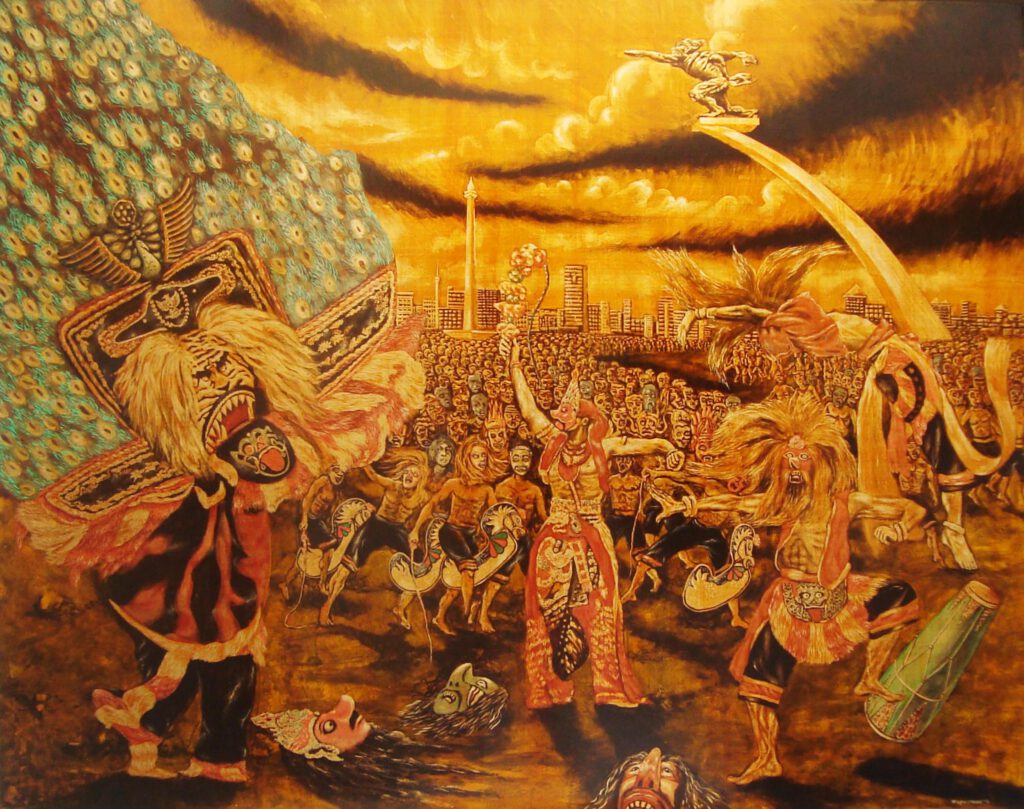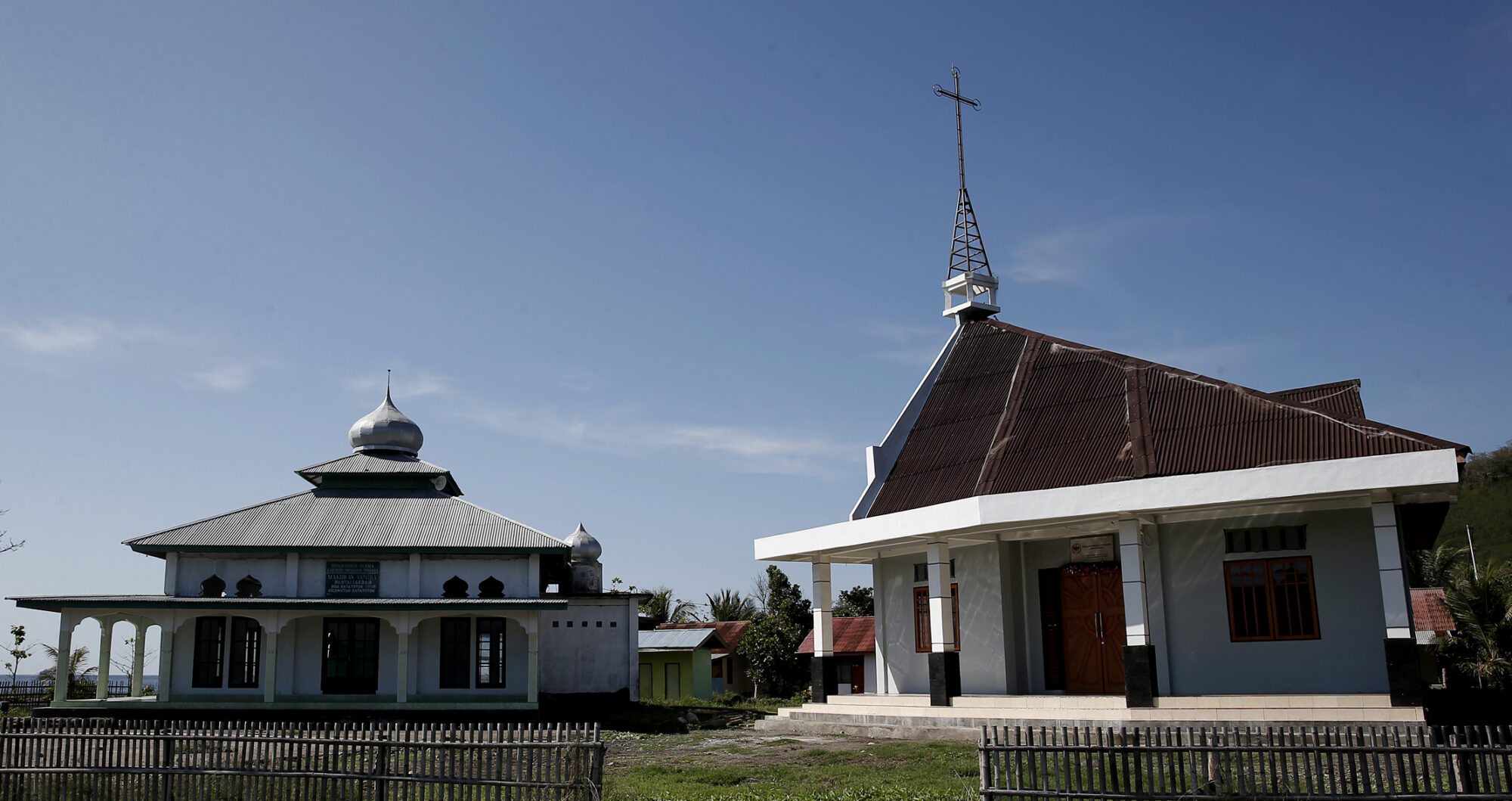
The existing diversity of society and culture is something that we must build together from various aspects of religion, customs, and social issues. Tolerance helps to strengthen social cohesion in religious diversity, which, however, must also adhere to certain social boundaries. Mutual respect for the respective religion and the beliefs of a particular group or individual is a prerequisite for social solidarity to develop.
In my work “Ritual of Liberation”, the combination of artistic and mystical elements aims to communicate moral values, solidarity, unity, willingness to make sacrifices and courage. With symbolic language, critical ideas convey a representation of the spirit of the Indonesian people. With the help of cultural elements, solidarity for the independence of the country is built.
A ritual that is presented to the government in order to stop the collapse of the existing system and to restore public trust with cultural, religious values, honesty, mutual cooperation, tolerance and responsibility for professionalism and authority towards the state.
The lacquer technique in brief:
The South Sumatran lacquer technique describes the process of painting with golden colour powder and a coating of the wooden panel with traditional processed materials. The people of South Sumatra traditionally use this technique to embellish every day’s objects and pieces of furniture. The combination with conventional methods and materials of the fine arts is relatively new. Through the lacquer-component in this work, I aim to express my origin and local tradition. Besides the concept, the artistic values depend on the layering of the traditional materials to create dimension, draping, colour differences and the sanding process, which can give the impression of texture and create maximum reflection.
Further reading:
Seise, C. Indonesian Art in the Periphery: Contemporary South Sumatran Lacquer Art. In: South-East Asia: Studies in Art, Cultural Heritage and Artistic Relations with Europe. Izabela Kopania (ed.). Polish Institute of World Art Studies & Tako Publishing House. Warsaw-Torun. 2012. pp. 261-265.
